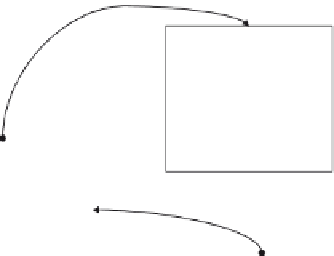Environmental Engineering Reference
In-Depth Information
Exploitation
•Environmental
indicators
•Welfare analysis
Market Model
•Multi-commodity
spatialmarket
model
•28 regional world
aggregates & EU27
Supply
Feed Demand
Supply Models
•Nuts2 / farm type
optimisation models
(Problem: maximisation of
agricultural income
subjectto restrictions)
Prices
Premiums
Young Animal
Market Module
•Linkedoptimisation
models (Member
State level)
Policy Module
•Calculation of
premiums depending
on Common Market
Organisations
Herds
Acreages
Aggregation
Fig. 11.1
The CAPRI model chain (CAPRI Model Documentation [Britz et al.
2007]
)
or calibrated to exogenous elasticities. At the same time, the parameters are chosen
such that the model recovers the base year price quantity framework. Coupled and
decoupled premiums from the first pillar of the CAP are calculated for each activity
in the policy model.
The global market module (Britz et al.
2007
: 96ff.) either differentiates
individual countries, for example single EU Member States, US, Canada, China, or
regional aggregates, for example the African, Caribbean and Pacific (ACP)
countries with preferential access to EU markets. It includes all primary agricultural
products of the European Accounts of Agriculture also covered by the supply
module plus major secondary products such as dairy commodities, vegetables
cakes and oils. The market model is designed as to allow for linkage to the regional
programming models, but also observing data availability and technical feasibility.
Data on market balances, to name an example, are only available at Member State
level, and therefore, market clearing and price formation mechanisms were only
implemented at country level for the EU. The market module is formulated as a
spatial multi-commodity model allowing for bilateral trade flows based on a “product
differentiation by origin” assumption (Armington
1969)
. It explicitly represents
major agricultural trade policy instruments such as (bilateral) tariffs, tariff quotas,
and subsidised exports. It follows a template approach, with structurally identical
equations for all markets, and applies flexible functional forms calibrated to
parameters collected from literature or other modelling systems such as the FAO's
World Food Model (see, e.g. Frohberg and Britz
1994)
. For projection, trend
forecasts on prices, yields and other economic variables are based on outlooks from
the European Commission
(2004)
and the Food and Agriculture Organization of the
United Nations (FAO
2003)
.









